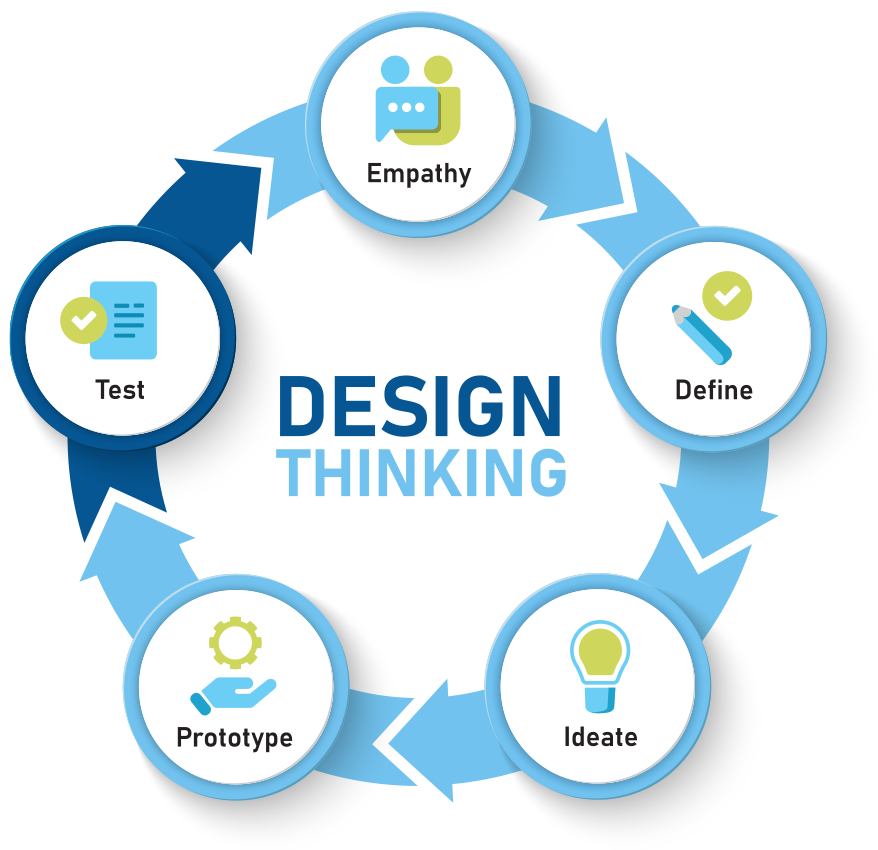TEST: The Final Frontier in the Design Thinking Journey
Posted on April 23, 2024
By Nick Chiechi, President, CS Designworks

As we reach the culmination of the design thinking process, we arrive at the Testing phase, a critical step that ensures the solutions developed are not only innovative but also deeply resonate with the users' needs. This phase is about validation, learning, and refinement, embodying the principle that a solution should evolve based on user feedback and real-world application. It's a testament to the design thinking ethos of being user-centric, iterative, and flexible.
 The Phases of Design Thinking
The Phases of Design Thinking
Empathy: Understanding Your Users
Define: Framing the Problem
Ideate: Generating Solutions
Prototype: Bringing Ideas to Life
Test: Refining the Solution
Understanding the Testing Phase
The Testing phase is where all the preceding efforts in the design thinking process – Empathy, Define, Ideate, and Prototype – converge to be scrutinized under the lens of real-world user interaction. It's not merely about verifying if the solutions work but understanding how they fit into the lives of the users, what improvements are necessary, and if they indeed solve the problem they were designed to address.
The Essence of Testing
Testing is fundamentally about learning from users. It involves presenting the prototypes developed in the previous phase to the target audience, observing their interactions, gathering feedback, and identifying any issues or areas for improvement. This feedback loop is crucial for refining the solution, ensuring it meets the users' needs and expectations before a full-scale launch.
Iterative Refinement
A key aspect of the Testing phase is its iterative nature. Based on user feedback, solutions may be adjusted, re-prototyped, and tested again. This cycle continues until the solution meets the project's goals and user needs, embodying the iterative spirit of design thinking where learning and refinement are ongoing.
The Role of Testing in Innovation
Testing is not just a phase but a philosophy that champions user feedback as a cornerstone of innovation. It ensures that solutions are not developed in a vacuum but are continually shaped and influenced by the users they aim to serve. This approach minimizes risks, enhances user satisfaction, and increases the likelihood of a solution's success in the market.
Conclusion: The Cohesive Power of Design Thinking
The Testing phase, while being the final step in the design thinking process, is also a gateway to continuous improvement and innovation. It encapsulates the essence of design thinking—empathy for the user, creative problem solving, and iterative development. Each phase of the design thinking process, from Empathy to Testing, contributes to a holistic approach that prioritizes the user at every step, ensuring solutions are not only innovative but also meaningful and impactful.
As demonstrated by the inclusion of design thinking in academic programs like MIT's master's degree, this approach is not just a trend but a fundamental shift in how problems are solved and solutions are developed. It's a testament to the power of empathy, creativity, and user feedback in driving forward-thinking solutions that can transform industries and enhance lives.
By embracing the principles of design thinking, organizations and individuals can navigate the complexities of modern challenges with a user-centric, innovative, and flexible approach, paving the way for solutions that truly make a difference.
Test in Action: A Hypothetical Example for a Commercial Real Estate Company |
|
As we conclude our journey through the design thinking process with "UrbanSpace Innovators," a commercial real estate company, we arrive at the final phase: Test. This phase is crucial for validating the effectiveness of the solutions developed during the Prototype phase and ensuring they truly meet the needs of the users. Recap of Prototype Phase InsightsUrbanSpace Innovators developed several prototypes, including modular office layouts, a digital collaboration platform, community hubs, and flexible lease agreements. These prototypes were designed to address the core needs identified in the Define phase: flexibility, personalization, and community. |
|
Transition to Test Phase Activities in the Test Phase Iterative Refinement Impact of the Test Phase Wrapping It All UpThe design thinking process, from Empathy to Test, has guided UrbanSpace Innovators in transforming their approach to commercial real estate. By deeply understanding their tenants' needs, defining clear problem statements, ideating creative solutions, prototyping, and testing these solutions, they have been able to innovate in ways that significantly improve the tenant experience. This journey underscores the power of design thinking in solving complex problems and creating user-centered solutions. Moreover, the importance of design thinking in today's business and innovation landscape is recognized globally, with institutions like MIT offering master's programs dedicated to this approach. This educational investment highlights the value of design thinking skills in driving meaningful innovation and solving real-world challenges across industries. Through this hypothetical example of UrbanSpace Innovators, we see how each phase of the design thinking process plays a crucial role in developing solutions that are not only innovative but also deeply aligned with user needs. The journey from Empathy to Test is a testament to the transformative power of design thinking in creating solutions that enhance lives and foster success. |
Previous: Phase 4 – Prototype
Read our Design Thinking Overview
Join Our Blog Community
@CSDesignworks


